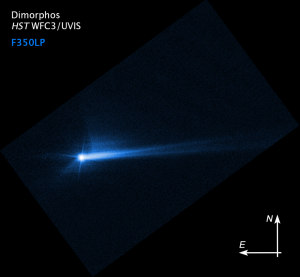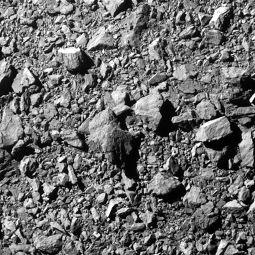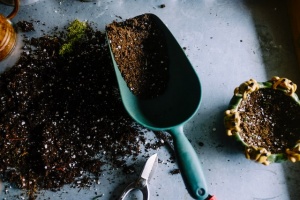
Artist’s illustration of Orbital Reef, a private space station project involving Blue Origin, Sierra Space, and a number of other partners. (Image credit: Sierra Space/Blue Origin)
The International Space Station (ISS) first launched component settled in orbit in 1998 with residents moving in November 2000. “The station has been continuously occupied for 22 years … having surpassed the previous record of 9 years and 357 days held by the Mir space station.” (Wikipedia, International Space Station). The International part of the title has proven well-used with the support of five space agencies: NASA (United States), Roscosmos (Russia), JAXA (Japan), ESA (Europe) and CSA (Canada).
The original plan for decommission was a mere 15 years (2015), but it has been extended several times. Even so, the extensions can’t continue forever. The wear and tear of long-term use, the leaks and holes, are adding up. (Inverse) Also in the mix in the Russia’s shenanigans in Ukraine, and the world hitting them with sanctions. The aggressor might pull out their funding early, previously planned to continue to 2024, in protest of getting called on the carpet for their actions.
2031 is becoming the hard-fast de-orbit date, with 2030 being when the shop will close up for the safety of all involved and the lights will be turned off.
The ISS will join all the Salyut stations (seven from 1971-1991 USSR), Skylab (1973-1979 USA), Mir (1986-2001 Russia), and the two Tiangong (2011-2019 China) in retirement. Once the station lands in Point Nemo, only Tiangong 3 will remain in orbit (2021-present, China).
Unless something changes. And boy-o-boy, are changes in the plans.
Several countries are thinking of creating their own stations.
But the first in line to deliver might be Amazon.
Well, Blue Origin (wholly owned by Jeff Brazos) (Cuofano 2022).
Blue Origin and Sierra Nevada Corporation plan to create a space station for commercial space activities and space tourism. The news brief for the plans released in October 2021, and the plans have been continuing apace, including approval by NASA.
The title for the planned station is Orbital Reef.
Some of the conversations on building Orbital Reef include using the ISS as a jumping point. Basically a port to work from.
Russia has been lifting new modules up for a Russian Orbital Service Station (ROSS) – official launch date of 2025. America and the international community of the ISS (without Russia), likewise, are working on Axiom Station and Lunar Gateway for science activities and as part of the Artemis program for lunar landings and human missions to Mars. All these government space stations, as well as several commercial ventures, are hoped to be online before 2030. The Orbital Reef is the most ambitious with a crew size of 10; most of the others are aiming for 4.
NASA’s Commercial Low-Earth Orbit Development (CLDP) program aims at getting AT LEAST one commercial outpost up and running before the ISS lights go out. Orbital Reef, Starlab (by NanoRacks) and an unnamed concept (by Northrop Grumman) all have received grants after the initial plans have been reviewed and approved by NASA. (Wall)
I’m highly entertained by Orbital Reef being referred to a “turn-key” location, where a (space) business park can be scaled to serve markets. Like one can just go to a relator and state your needs, and they hand you the key to a building.
The large crew of ten for Orbital Reef is aimed at supporting the renters, including a possible space hotel. “We sell only the utilities and services you need to sustain your business: power, cooling, high-bandwidth communication, information and physical security, robotic services, technician attention, stowage, and logistics.” More can be found on this sci-fi, soon to be science fact, location at https://www.orbitalreef.com/.
Planning on filming a commercial that needs microgravity? They got you covered. Need microgravity to create the next microchip? Think Orbital Reef.
Key to the dream of the Orbital Reef is Dream Chaser, a pint-sized reusable space plane. Sierra Space hopes to demonstrate viability in a February 2023 launch aboard the ULA Vulcan Centaur booster rocket.
Tons of prep-work and moving parts are in play for 2023 with 2024 being the year of heavy lifting into orbit as things get off the production line. Be interesting to see who wins the low-Earth orbit real estate race.
Bibliography
Clark, Stephen. “Blue Origin and Sierra Space team up for commercial space station.” Spaceflight Now. October 25, 2021. – last viewed 12/21/2022.
Foust, Jeff. “Orbital Reef passes NASA review.” SpaceNews. August 22, 2022. https://spacenews.com/orbital-reef-passes-nasa-review/ – last viewed 12/21/2022.
Cuofano, Gennaro. “Who owns Blue Origin?” FourWeekMBA. September 30, 2022. https://fourweekmba.com/who-owns-blue-origin/ – last viewed 12/21/2022.
Inverse. “NASA Plans to Obliterate the International Space Station – Here’s How.” (undated). https://www.inverse.com/science/nasa-kill-iss – last viewed 12/21/2022.
Kirk, Benny. “Space Shuttle vs Dream Chaser: Can This Pint Sized Space Plane Really Replace an Icon?” autoevolution. October 21, 2022. – last viewed 12/21/2022.
Orbital Reef. (website, undated). https://www.orbitalreef.com/ – last viewed 12/21/2022.
The Planetary Society. “Missing Briefings: Blue Origin wants to build its own space station.” The Downlink. October 29, 2021. (email newsletter)
Shields, Ken (of Sierra Space Corp). “Orbital Reef: A Space Station for a New Economy of Space.” IEEE-CNSV Consultants’ Network of Silicon Valley. March 8, 2022. – last viewed 12/21/2022.
Wall, Mike. “Blue Origin’s private Orbital Reef space station passes key design review.” Space.com. August 24, 2022. https://www.space.com/blue-origin-orbital-reef-system-definition-review – last viewed 12/21/2022.
Wikipedia. “International Space Station.” (undated) https://en.wikipedia.org/wiki/International_Space_Station – last viewed 12/21/2022.
Wikipedia. “List of space stations.” (undated). https://en.wikipedia.org/wiki/List_of_space_stations – last viewed 12/21/2022.
Wikipedia. “Orbital Reef.” (undated) https://en.wikipedia.org/wiki/Orbital_Reef – last viewed 12/21/2022.



